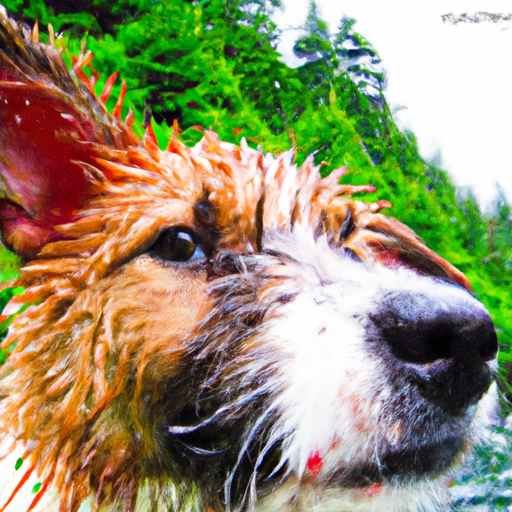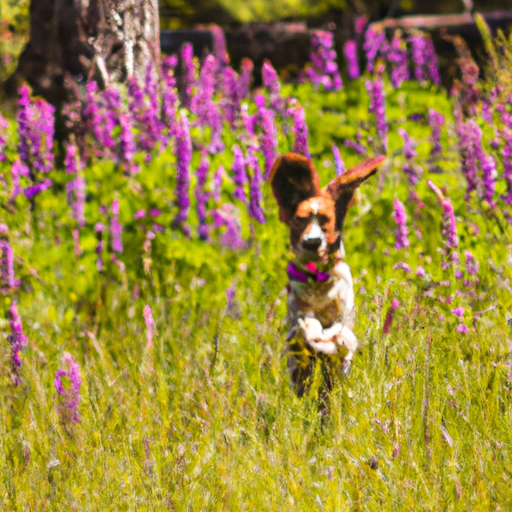You've made it through the early stages of training your furry friend, and now you're in months 7-8 where obedience and training progress becomes even more important. In this article, we'll explore some key strategies for maintaining obedience and continue the progress you've already made. From reinforcing basic commands to introducing more advanced skills, we'll provide you with the tools and tips you need to keep your dog on track during this crucial phase. So, let's dive in and ensure that your four-legged companion remains well-behaved and continues to flourish in their training journey.
Importance of Consistency
Consistency is crucial when it comes to maintaining obedience and training progress in your dog, especially during months 7-8. Dogs thrive on routine and structure, so establishing a consistent training schedule is essential. By consistently reinforcing training, rewarding good behavior, and avoiding the reinforcement of bad habits, you lay a solid foundation for your dog's continued growth and development.
Establishing Routine
During months 7-8, it is important to establish a consistent routine for your dog. This includes setting specific times for meals, exercise, and training sessions. Dogs feel more secure and confident when they know what to expect, so sticking to a routine helps them understand and anticipate their daily activities.
Reinforcing Training
Consistency is key when reinforcing training commands and behaviors in your dog. Repeating commands consistently and positively rewarding desired behaviors will help solidify their understanding of the commands. When training your dog, be sure to use the same words, gestures, and prompts consistently to avoid confusion. Consistency in training sessions will help your dog retain and improve upon the skills they have learned.
Rewarding Good Behavior
Positive reinforcement is a powerful tool in dog training, and it plays a crucial role in maintaining obedience during months 7-8. By consistently rewarding your dog for good behavior, such as following commands and exhibiting desirable behaviors, you reinforce those actions. Use treats, praise, and affection as rewards to motivate and encourage your dog. This positive reinforcement will create a strong bond between you and your furry friend, making him eager to continue learning and obeying.
Avoiding Reinforcement of Bad Habits
Consistency also involves avoiding the reinforcement of bad habits in your dog. When a dog engages in unwanted behaviors, it's important not to inadvertently reward or reinforce those behaviors. Be consistent in redirecting your dog's attention towards positive behaviors and avoid giving attention or rewards when they exhibit detrimental actions. Consistently discouraging bad habits will help your dog understand what behaviors are unacceptable and encourage them to focus on more appropriate actions.
Advanced Commands
As your dog progresses in their training journey, it's essential to introduce more advanced commands to challenge and stimulate their mental capabilities. These advanced commands serve to expand their vocabulary, promote mental stimulation, and consolidate their basic commands.
Introducing Complex Exercises
During months 7-8, you can begin introducing complex exercises to your dog's training routine. These exercises may involve more intricate sequences of commands or combinations of basic commands. For example, you can teach your dog to “sit,” “stay,” and “heel” in a specific sequence. By gradually introducing complexity, you provide mental stimulation and encourage your dog to think and respond in a more advanced manner.
Expanding Vocabulary
Building upon the foundation of basic commands, it is important to expand your dog's vocabulary during months 7-8. Teach them additional commands such as “lie down,” “roll over,” or “leave it.” Introducing new words and associated actions widens their understanding and improves their ability to communicate with you effectively.
Promoting Mental Stimulation
Advanced commands not only challenge your dog mentally but also provide them with the mental stimulation they need during months 7-8. Mental exercises keep their minds sharp and engaged, preventing boredom and destructive behaviors. Incorporate activities like problem-solving games, hide-and-seek with toys, or puzzle toys to engage their cognitive abilities and keep them mentally stimulated.
Consolidating Basic Commands
While introducing advanced commands, it is equally important to reinforce and consolidate the basic commands your dog has learned. Regularly practicing and reinforcing fundamental commands like “sit,” “stay,” and “come” ensures that these behaviors become ingrained in their routine. Reinforcing the basics helps solidify their understanding and responsiveness, and it serves as a foundation for more advanced training.
Socialization
Socialization is an ongoing process that is especially important during months 7-8. It involves exposing your dog to various environments, encouraging positive interactions with people and animals, organizing playdates, and even considering joining obedience classes.
Continuing Exposure to Different Environments
In months 7-8, it is vital to continue exposing your dog to different environments. Taking them for walks in new neighborhoods, parks, or even pet-friendly events allows them to become accustomed to different sights, sounds, and smells. This exposure helps them adapt better to new situations and reduces the likelihood of fear or anxiety in unfamiliar environments.
Encouraging Positive Interactions with People and Animals
Socializing your dog with people and animals is crucial to their development. Encourage positive interactions by introducing them to friendly dogs of various sizes, ages, and breeds. Similarly, expose them to different types of individuals, including children, adults, and elderly people. Always supervise interactions to ensure the safety and comfort of all parties involved.
Organizing Playdates
Playdates provide an opportunity for your dog to interact with other dogs and develop social skills. Arrange playdates with dogs of known temperament and good behavior. This allows your dog to practice appropriate play behaviors, learn how to read canine body language, and develop proper socialization skills. Monitoring the playdate sessions is crucial to ensure the interactions remain positive and safe for all dogs involved.
Joining Obedience Classes
Enrolling your dog in obedience classes during months 7-8 can be highly beneficial. These classes provide structured environments where your dog can continue to learn and socialize under professional guidance. Obedience classes help reinforce basic commands, improve their obedience in distracting environments, and enhance their ability to respond to verbal and visual cues.
Advanced Leash Training
Leash training is an essential part of a dog's obedience training, and during months 7-8, you can focus on advancing their skills on the leash. This includes practicing loose leash walking, introducing the heel command, training for longer distances, and proofing against distractions.
Practicing Loose Leash Walking
Teaching your dog to walk politely on a loose leash is crucial for enjoyable walks. During months 7-8, reinforce loose leash walking by consistently rewarding your dog when they maintain a relaxed and slack leash. Use positive reinforcement techniques like treats, praise, and rewards to encourage this behavior.
Introducing Heel Command
The heel command is more advanced than loose leash walking, as it requires your dog to walk closely beside you with their shoulder in line with your leg. During months 7-8, introduce the heel command gradually by using a specific verbal cue and adjusting your walking pace accordingly. Consistency is critical to help your dog understand and comply with this more advanced command.
Training for Longer Distances
Once your dog has mastered loose leash walking and the heel command, it's time to gradually increase the distance of your walks together. Practice walking for longer distances to improve their endurance and focus while remaining obedient on the leash. Gradually extend the duration and intensity of your walks to challenge your dog and keep them engaged.
Proofing Against Distractions
Training your dog to maintain obedience on the leash amidst distractions is essential during months 7-8. As you encounter various distractions, such as other dogs, people, or animals, consistently reinforce the desired behavior and redirect their attention when necessary. Be patient and consistent in training sessions to help your dog generalize their leash obedience skills across different environments and distractions.
Obedience Training Refresher
Even as your dog progresses, it is crucial to regularly refresh their obedience training during months 7-8. This involves reviewing basic commands, strengthening their response to verbal and visual cues, improving recall, and addressing any specific challenges that may arise.
Reviewing Basic Commands
Take time to review and reinforce the basic commands your dog has learned. Practice commands like “sit,” “stay,” and “come,” ensuring that your dog responds promptly and reliably. Consistently reinforce the correct responses with rewards and positive reinforcement.
Strengthening Response to Verbal and Visual Cues
During months 7-8, work on strengthening your dog's response to both verbal and visual cues. Ensure that they understand and respond to hand signals, verbal commands, and a combination of the two. Regularly practice these cues in various environments to help your dog generalize their responses.
Improving Recall
Recall is a crucial command for your dog's safety and well-being. Use recall exercises to improve their responsiveness. Start in low-distraction environments and gradually progress to more challenging situations. Reinforce successful recalls with high-value rewards and positive reinforcement.
Addressing Specific Challenges
During months 7-8, you may encounter specific training challenges with your dog. Common issues could include difficulty with a particular command, leash pulling, or unwanted behaviors. Take the time to address these challenges promptly and seek guidance from a professional trainer if needed. Consistency, patience, and positive reinforcement are key to overcoming these challenges.
Problem Solving
As your dog's training progresses, it is important to address and overcome any behavioral problems that may arise during months 7-8. Some common issues include separation anxiety, jumping up behavior, resource guarding, and excessive barking.
Addressing Separation Anxiety
Separation anxiety can be distressing for both you and your dog. During months 7-8, gradually teach your dog to become comfortable being alone by practicing short periods of separation and gradually increasing the duration over time. Provide them with engaging toys, a safe and comfortable space, and positive reinforcement for calm behavior.
Eliminating Jumping Up Behavior
Jumping up is a common behavior problem that can be addressed during months 7-8. Teach your dog an alternative behavior, such as sitting or offering a paw, and consistently reward and reinforce that behavior instead of jumping up. Practice this alternative behavior with various individuals to generalize the desired response.
Dealing with Resource Guarding
Resource guarding occurs when a dog becomes possessive or protective over their belongings, such as food, toys, or beds. Address this behavior by carefully managing their access to resources and gradually desensitizing them to the presence of people and other animals around their possessions. Seek guidance from a professional trainer to ensure the safety and well-being of all involved.
Managing Excessive Barking
Excessive barking can be a nuisance and a sign of underlying issues. Determine the root cause of your dog's barking, whether it's due to boredom, anxiety, or excessive stimulation. Address the cause by providing mental and physical stimulation, managing the environment, and seeking professional advice if necessary. Consistent training and positive reinforcement techniques can help reduce excessive barking.
Handling Distractions
Distractions can pose challenges during training, but it's crucial to teach your dog to remain focused and obedient even in distracting environments. During months 7-8, focus on gradually introducing distractions, teaching focus and impulse control, implementing counterconditioning techniques, and creating distraction-proof environments.
Gradually Introducing Distractions
Start by introducing mild distractions and gradually increase the difficulty level. For example, practice obedience commands with mild distractions such as toys or low-level noises. As your dog becomes more adept at focusing despite these distractions, gradually escalate to more challenging situations, such as training in busy parks or near other dogs.
Teaching Focus and Impulse Control
Teaching your dog focus and impulse control is crucial for maintaining obedience in distracting environments. Exercises such as “watch me” or “wait” can help redirect their attention back to you, promoting focus and self-control. Consistently reward appropriate responses and gradually increase the duration and intensity of distractions.
Implementing Counterconditioning
Counterconditioning involves changing your dog's emotional response to a specific stimulus or distraction. For example, if your dog becomes anxious or reactive around other dogs, gradually expose them to well-behaved dogs in controlled and positive settings. Pair the presence of the stimulus with high-value rewards and positive experiences to create a positive association and reduce unwanted behaviors.
Creating Distraction-Proof Environments
During months 7-8, it is essential to create distraction-proof environments for training sessions. Begin in a quiet and low-distraction area to establish a solid foundation before gradually increasing the level of distractions. Minimize competing stimuli and gradually increase environmental distractions to provide challenging yet manageable training scenarios.
Positive Reinforcement Techniques
Positive reinforcement techniques play a crucial role in maintaining obedience and training progress during months 7-8. By using treats and rewards, implementing clicker training, utilizing verbal and physical praise, and avoiding punishment-based methods, you create a positive and motivational training experience for your dog.
Using Treats and Rewards
Treats and rewards are powerful motivators and can be used to reinforce desired behaviors during training sessions. Choose high-value treats that your dog finds particularly enticing and reward them immediately after they perform the desired behavior. Consistency and timely rewards help solidify their understanding of which behaviors lead to positive outcomes.
Implementing Clicker Training
Clicker training is a highly effective positive reinforcement technique that associates the sound of a clicker with a reward. By using a clicker, you can precisely mark the exact moment your dog performs the desired behavior, making it easier for them to understand and repeat the behavior. Pair the clicker sound with treats or praise consistently, and your dog will quickly associate the sound with a reward.
Utilizing Verbal and Physical Praise
Verbal and physical praise are simple yet powerful ways to reward your dog and reinforce their desired behaviors. Use an enthusiastic and cheerful tone of voice to offer verbal praise, saying “good job!” or “well done!” when they perform the desired behavior. Additionally, provide physical affection such as petting or gentle pats to acknowledge and reinforce their good behavior.
Avoiding Punishment-Based Methods
It is important to avoid punishment-based training methods during months 7-8. Punishment can create fear, anxiety, and negative associations in your dog's training experience. Instead, focus on positive reinforcement techniques to motivate and encourage desired behaviors. Positivity and rewards will strengthen the bond between you and your dog, creating a positive training environment that fosters long-term obedience.
Maintaining Physical Health
Maintaining your dog's physical health is essential for their overall well-being and obedience. During months 7-8, emphasize a regular exercise routine, provide proper nutrition and a consistent meal schedule, uphold grooming and hygiene practices, and monitor their general health conditions.
Regular Exercise Routine
Regular exercise is vital for your dog's physical health and mental well-being. During months 7-8, ensure they receive daily exercise suitable for their breed and age. Engage in activities like daily walks, playtime in the park, or interactive games to burn off excess energy and promote a balanced lifestyle.
Proper Nutrition and Meal Schedule
A nutritious diet is crucial for maintaining your dog's overall health and energy levels. Consult with your veterinarian to ensure you are providing the appropriate food for your dog's breed, size, and age. Establish a consistent meal schedule and measure their food portions to promote a healthy weight and prevent obesity-related issues.
Grooming and Hygiene Practices
Maintaining your dog's grooming and hygiene during months 7-8 is essential. Regularly brush their coat to prevent matting and promote a healthy coat. Trim their nails, clean their ears, and brush their teeth regularly to prevent discomfort and potential health issues. Establishing positive grooming routines from an early age creates a stress-free experience for both you and your dog.
Monitoring General Health Conditions
Stay vigilant and monitor your dog's general health conditions during months 7-8. Pay attention to any changes in behavior, appetite, digestion, or physical appearance. Early detection and treatment of any health issues are crucial for your dog's well-being. Schedule regular veterinarian check-ups and seek professional advice if you notice any unusual symptoms.
Mental Stimulation Activities
Mental stimulation is just as important as physical exercise for your dog's overall well-being and obedience. During months 7-8, engage in mental stimulation activities such as puzzle toys and interactive games, nose work and scent training, teaching new tricks, and participating in agility or obstacle courses.
Puzzle Toys and Interactive Games
Puzzle toys and interactive games provide mental stimulation, engaging your dog's problem-solving abilities. These toys require your dog to figure out how to obtain a reward, such as a treat hidden inside. Additionally, interactive games like hide-and-seek or fetch with a twist keep your dog mentally engaged and satisfied.
Nose Work and Scent Training
Engaging your dog in nose work and scent training exercises during months 7-8 taps into their natural instincts and provides mental stimulation. Hide treats or toys in your home or garden for your dog to search and find using their sense of smell. Gradually increase the difficulty and complexity of these exercises to challenge their scent detection skills.
Teaching New Tricks
Teaching your dog new tricks during months 7-8 enhances their problem-solving abilities and strengthens the bond between you. Teach them tricks like “shake hands,” “play dead,” or “spin around.” Break down each trick into smaller steps and use positive reinforcement to reward their progress. Learning new tricks boosts their confidence and mental dexterity.
Engaging in Agility or Obstacle Courses
Participating in agility or obstacle courses provides both mental and physical stimulation for your dog during months 7-8. These activities challenge your dog's problem-solving skills, focus, and coordination. Start with simple courses and gradually progress to more complex ones. Always prioritize safety and provide positive reinforcement throughout the training process.
In conclusion, maintaining obedience and training progress in months 7-8 requires consistency, dedication, and a range of strategies. By establishing a routine, introducing advanced commands, improving leash training, refreshing obedience skills, addressing problem behaviors, handling distractions, implementing positive reinforcement techniques, prioritizing physical health and mental stimulation, and providing socialization opportunities, you set your dog up for continued success. Remember to maintain a friendly and positive tone as you guide your furry companion through this crucial stage of their training journey. With your love and support, your dog will thrive and become a well-behaved and happy member of your family.






